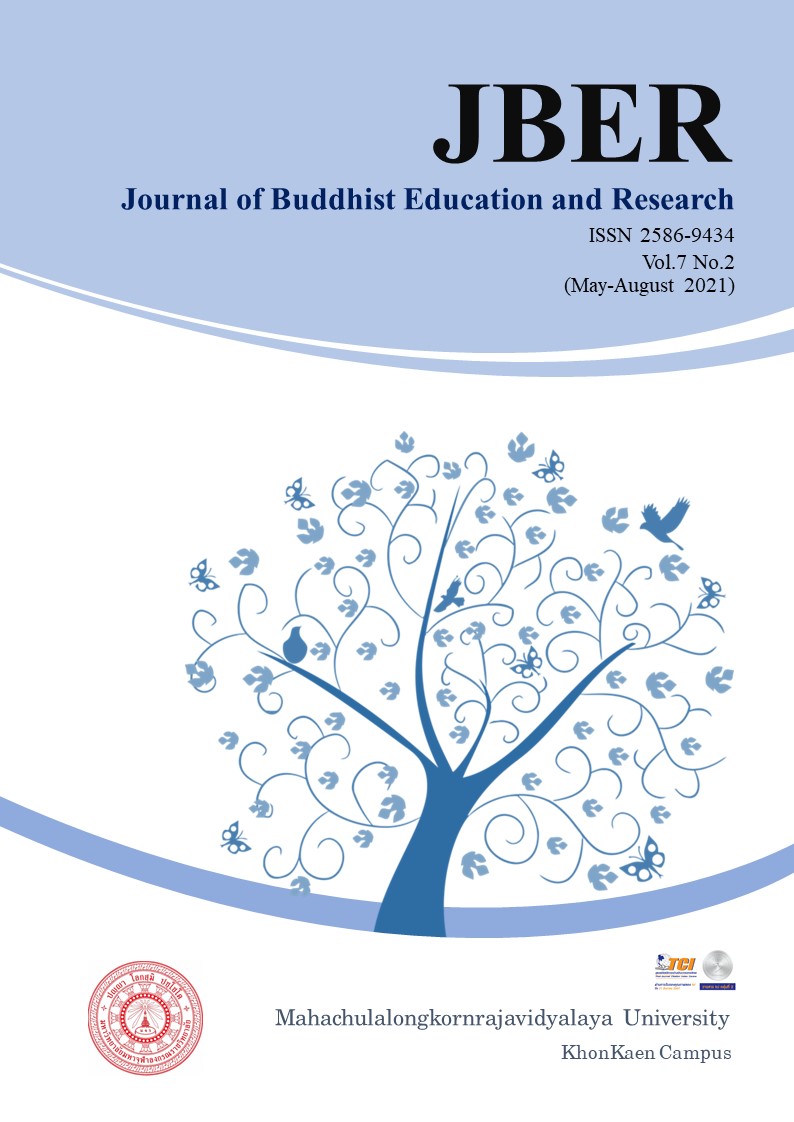THE MODEL OF BUDDHA-DHAMMA PROPAGATION BY USING ENGLISH OF THE INTERNATIONAL MEDITATION CENTERS IN THAILAND
Keywords:
English usage; Buddha-Dhamma Propagation; International meditation centersAbstract
This research aim was to study the model of Buddha Dhamma propagation by using English of the international meditation centers in Thailand. It is qualitative research by In-depth interviews the key informants with a group of 40 key informants and a descriptive analysis.
The results showed that the model of propagating the Buddha-Dhamma in English by international Dhamma practice centers in Thailand. If any Dhamma practice center, the training leader can use English, it shall implement it. If unable to use English, an English translator can arrange. Some centers have invited foreigners with experience in Dhamma practice to help train them. The body language model practitioners will practice with demonstrations i.e. in seating meditation, working meditation, and managing various postures morning and evening chanting, spreading mercy, etc. The emotional exam model by having an individual emotional examination by asking questions that arise during practice and finding solutions. The media usage model use multimedia recording the teaching of both Thai and foreign meditation teachers in English as part of training. The location style many have arranged a place to be convenient and suitable for practitioners not to cause anxiety. Specialized masters from different centers are invited for training to enhance the experience. The organizing a Dhamma tour by bringing group of Dhamma practitioners to practice in other centers to exchange knowledge between each other. Activities Model for the closing ceremony of the Dhamma practice project with Thai cultures such as alms offering to make merit, Bai Sri Su Kwan for Dhamma practitioners who passed the Dhamma practice course for foreigners.
References
ข่าวบุญใจสว่าง. (2559). นักการเมืองยุโรป-อเมริกา ขานรับ การเจริญสติ เป็นวาระแห่งชาติ. สืบค้นเมื่อ 15 มีนาคม 2563. จาก https://m.facebook.com/jaisawangNews/posts/1666279897023537:0?locale2=th_TH
พระมหาราชัน จิตฺตปาโล. (2561). แนวทางการพัฒนาภาษาอังกฤษของพระสงฆ์ไทยเพื่อการเผยแผ่พระพุทธศาสนา. วารสารบัณฑิตศึกษาปริทรรศน์. 14(3), 111-123.
พระมหาวราสะยะ วราสยานนท์. (2563). ภาษาอังกฤษกับการเผยแผ่พระพุทธศาสนาในศตวรรษที่ 21. วารสารมหาจุฬานาครทรรศน์. 7(10), 98-112.
อรรชนิดา หวานคง. (2559). การจัดการเรียนการสอนภาษาอังกฤษในศตวรรษที่ 21. วารสารสถาบันวิจัยญาณสังวร. 7(2), 303-314.





